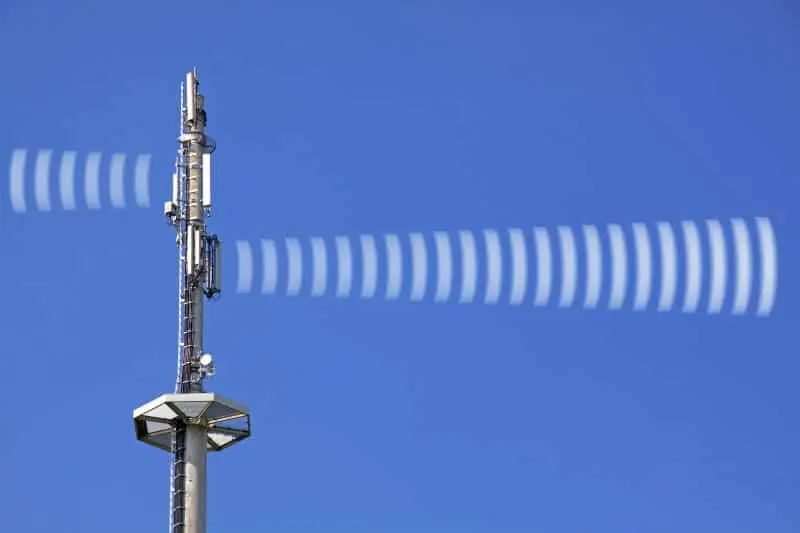Electric and magnetic fields are an invisible form of energy most referred to as radiation. This radiation uses electrical power and other forms of natural or artificially created lighting and as a result, they affect certain types of electronic equipment.
The EMF waves that affect electronics are much stronger than those in the general environment. Wondering how these waves affect electronics?
Let’s discuss more about these waves and how they affect other electronic devices.
What is an EMF Wave?
EMF waves consist of both electric and magnetic fields. The electric field is the voltage present in an object. Higher voltage results in a strong electric field. Whereas, when an electric current flows through an object, it creates a magnetic field. The amount of power consumption in an electrical device affects the strength of the magnetic field while electric fields remain constant.
These fields are everywhere in the environment and they’re invisible to the human eye. Electric fields form as a result of the build-up in electrical charges. Electric fields affect the charged particles such as the electrons and protons and it causes them to move. These electrically charged particles affect how the electrons move in an object.

The flow of the electrically charged particles results in the emission of magnetic fields. Interactions of both electric and magnetic fields produce radiation waves on the electromagnetic spectrum.
The waves radiate (propagate) through space and often consist of electromagnetic radiant energy such as microwaves, radio waves, light, infrared, etc.
These waves can interact with other electrically charged particles and as a result, they exert force on them. Further, EMF waves carry the energy and momentum away from devices and this can affect different quantities of matter they interact with.
Do EMF Waves Affect Electronics?
Yes, electromagnetic field waves do affect electronics in different ways. Different types of electronic devices are affected differently depending on the type of radiation exposure.
Low-frequency EMF waves have fewer effects on electronic components, while high-frequency radiation waves affect electronics in two ways: through ionizing dose effects and through single event effects.
The ionizing dose is the total amount of radiation that accumulates with time. The dose rate and how long the device is exposed to radiation waves can affect the electronic components. Long-term exposure can cause leakage of current as it flows within the circuits.
Single event effects occur due to exposure to high charged particles that cause a spike in voltage of analog devices while digital circuits will have bit flips.
For example, computer chips and diodes can be affected by high-frequency radiation such as gamma rays. Exposure to radiation affects the functioning of different components within an electrical device.
Low-frequency waves have low doses of electromagnetic radiation and expose your electronic devices to minimal risks.
How the Waves Affect Electronics

Electronics consist of various integrated components that control the flow of electrical currents. The integrated components communicate with each other to process and transmit information. Each of the components is connected to the other through wires that carry electrically charged particles.
If the wire or antenna of the electrical device conducts the alternating current, it propagates electromagnetic radiation similar to the frequency of the flowing current.
When the radio waves or microwave waves pass through a conductor, they couple to the conductor and then flow along with it. As a result, they induce an electric current on that conductor as well as move the electrons in the conducting material.
The interaction of these waves with other conducting materials can produce an electric current or heat. Sometimes they can produce both.
Components such as antennas, capacitors, inductors, transmitter ICs, and transformers are the main source of non-ionizing radiation. When radiation waves from these components pass through an unintended circuit route it causes interference with signal propagation. This electromagnetic interference is commonly known as noise.
Non-ionizing radiation such as radio waves and microwaves can affect signals in an electronic device. Radio waves emitted by wireless communication antennas have effects on device signal and power integrity. It can also interfere with the functioning of the electronic circuit.
The radiation waves can affect components inside a piece of electrical equipment. For example, it can make insulating wires brittle making them break with a slight bend. It can also cause short-circuiting in the equipment.
Effects of EMF Waves on Electronics
1. Affects car electronic control system
Cars with electronic control systems are susceptible to electromagnetic interference from magnetic field frequencies of above 2000 µT. These higher frequencies interfere with the normal functioning of your car.
2. Corrupts credit card information encoded on the magnetic strip
Credit cards, bank checks, and railway tickets among others have encoded information on a magnetic strip. If the cards are exposed to high levels of magnetic fields of about 10 000 µT, it will corrupt the information stored on the magnetic strip, although it is rare to have such fields occur at 50 Hz.
3. Affects stepper motor in Quartz watches
Quartz watches that use analog dials have a small stepper motor for driving the hands. If the stepper motor is exposed to the external power-frequency magnetic field of above 1000 µT, it will cause the hand to rotate 100 times faster than normal. The magnetic field waves only affect the rotation of the stepper motor and it doesn’t damage your watch permanently.
4. Affects steadiness of VDU images
Magnetic field waves can affect the steadiness of images in a visual display unit (VDU) that uses cathode heat tubes. Plasma, liquid crystal display, and other modern display units do not experience these problems.
The VDU frame frequency is affected by waves with a power-frequency of 50 Hz. Some VDUs are more sensitive and power frequencies of only 0.5 microtesla can affect the images.
5. Fluorescent tube
Fluorescent tubes have an electric field inside the tube that enables them to discharge. When the main voltage is used in the tube, it generates an electric field. Powerlines can also be used to produce electric fields. The fluorescent tube has a visible glow when using the powerline, though it is only visible in a dark environment.
How to Minimize Radiation Effects On Electronic Devices
Most electronic devices are designed to withstand certain levels of radiation exposure. This electromagnetic compatibility (EMC) is measured in volts per meter and makes electronic devices more reliable for use.
Otherwise, without this EMC, the devices could interfere with the functioning of each other. Each electric device has specific EMC requirements it has to fulfill for proper functioning.
Since it is difficult to shield a single electronic device from electromagnetic radiation, you can take measures to minimize radiation effects on the device.
If you’re experiencing effects from non-ionizing radiation, you should:
- use EMF shields on your circuit board; and
- use good impedance control that allows you to improve the signal integrity of the electronic components.
If your effects are from ionizing radiation then you should:
- ensure your circuit board has radiation-hardened components; and
- ensure your electronic devices have a radiation-hardened enclosure.
Radiation hardening is an effective tool for minimizing the effects of radiation exposure on electronic devices.
Conclusion
High-frequency electromagnetic field waves are everywhere and exposure to high doses not only has effects on human health but also on electronic devices. Both low-frequency and high-frequency radiation have effects on semiconductor circuits and can interfere with signal flow within the electronic equipment.
Electromagnetic interference waves affect electronic devices and you should take measures to minimize radiation exposure.


